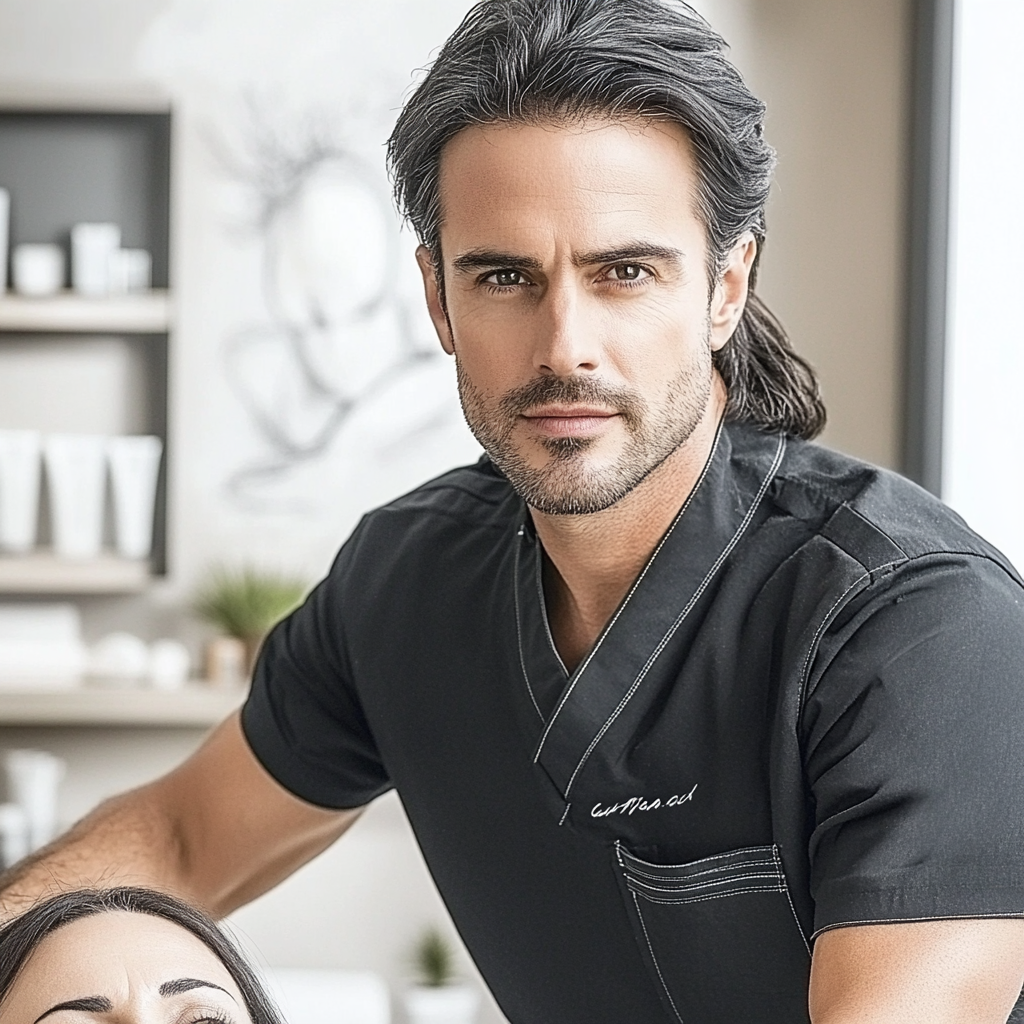Circular Facelift: Comprehensive Rejuvenation and Restoration of the Facial Contour
Time is an unrelenting enemy that whispers of its existence at every turn, leaving traces of fatigue and loss of youth on our faces. However, the world of plastic surgery offers a bright alternative — circular facelift. This innovative approach to rejuvenation allows you to restore lost contours and make your face fresher and more appealing. Let’s take a closer look at the specifics of this procedure and understand how it can help eliminate sagging skin, remove the double chin, and bring youth back to the face, whether you plan to use implants or manage without them.
What is a Circular Facelift?
A circular facelift, also known as a facelift or rhytidectomy, is a comprehensive surgical procedure aimed at eliminating visual signs of aging. Unlike localized methods, this surgery addresses all areas of the face, including the forehead, cheeks, chin, and neck, ensuring a harmonious and natural result that can "turn back time" by as much as 10-15 years.
Who is a Candidate for a Circular Facelift?
Typically, patients over the age of 45 with pronounced signs of aging opt for a circular facelift. However, age is not the sole criterion. If you have noticed deep nasolabial folds, sagging cheeks, an indistinct facial contour, or a double chin, then a circular facelift might be exactly the solution you need. It will also help to eliminate deep wrinkles on the forehead and around the eyes, as well as drooping corners of the mouth.
It is essential to understand that a circular facelift is a serious intervention, and you should undergo a thorough consultation with an experienced specialist before making a decision.
Types of Circular Facelifts
There are several types of circular facelifts, each suitable for specific problems and levels of age-related changes:
-
Upper facelift: affects the forehead and brow area, suitable for the early signs of aging.
-
Mid facelift: corrects the mid-zone of the face, eliminating "bags" under the eyes and jowls.
-
Lower facelift: focuses on the lower third of the face and neck, getting rid of the double chin.
- Full circular facelift: combines all the aforementioned techniques to achieve the maximum rejuvenating effect.
The choice of a specific technique depends on individual characteristics and the degree of changes in the face. It's important not to overlook this stage — the right choice will help achieve the best results.
The Technique of Performing a Circular Facelift
A circular facelift is a complex procedure that requires a high level of skill from the surgeon. The operation occurs in several stages:
-
Preparation: before the surgery, the patient undergoes various checks, including blood tests and an ECG (electrocardiogram), as well as a consultation with the anesthesiologist.
-
Anesthesia: the operation is performed under general anesthesia, ensuring the patient's comfort.
-
Incisions: the surgeon makes careful incisions along the hairline and behind the ears to hide the scars.
-
Tissue Elevation: the skin is separated from the underlying tissues, allowing the surgeon to access deeper structures of the face.
-
SMAS Correction: at this stage, the superficial musculoaponeurotic system (SMAS) is lifted, which is a crucial point in achieving a long-lasting effect.
-
Removal of Excess Skin: excess skin and fat deposits are removed, allowing for contour correction of the face.
-
Suturing: the skin is pulled tight and secured in a new position, ensuring an aesthetic appearance of the sutures.
-
Dressing Application: a compression bandage is applied to the face to reduce swelling in the first few days after the surgery.
The entire procedure can take from 2 to 4 hours, depending on the volume of work and the individual's specifics. If you decide on a circular facelift, be sure to discuss all details and concerns with your surgeon.
Advantages of Circular Facelift
This procedure has several significant advantages:
-
Comprehensive Approach: addressing all facial areas allows for a natural and harmonious result.
-
Long-Lasting Effect: results can last up to 10-15 years with proper care.
-
Elimination of Deep Age Changes: the surgery addresses problems that typical cosmetic procedures cannot resolve.
-
Restoration of Facial Contour: circular facelift effectively deals with sagging skin and indistinct facial contours.
-
Combination of Methods: a facelift can be combined with other procedures, such as blepharoplasty (eyelid surgery) or lipofilling, for an even more impressive outcome.
This makes the circular facelift an appealing option for those seeking sustainable and noticeable rejuvenation.
Rehabilitation After a Circular Facelift
Rehabilitation is a crucial stage that significantly influences the final result of the operation. After a circular facelift, swelling and bruising may occur, but these will subside over time. Be sure to follow the surgeon's instructions: keep your head elevated and avoid intense physical activity for a month.
Sutures are typically removed 5-10 days after surgery, and most patients can return to their normal lives within 2 weeks. It is possible to fully assess the results after 3-6 months, when the tissues have completely healed.
During the rehabilitation period, it is vital to adhere strictly to all the doctor's recommendations. This will help avoid complications and achieve the aesthetic outcome you desire.
Circular Facelift with Implants
Sometimes, to achieve optimal results, a circular facelift is combined with the installation of implants. This not only eliminates sagging skin, but also adjusts facial volumes, giving it a more youthful appearance.
The most common types of implants include:
-
Cheek Implants: help restore volume in the mid-face, making it more expressive.
-
Chin Implants: improve the facial profile by correcting a poorly defined chin.
-
Buccal Implants: restore lost cheek volume, giving the face freshness and youth.
Implants are made from biocompatible materials and are placed during the main surgery, which does not increase the rehabilitation period. If you are considering the option with implants, be sure to discuss all details with your plastic surgeon.
Alternatives to Circular Facelift
Despite the high effectiveness of a circular facelift, not all patients are ready for such an intervention. In such cases, it’s worth considering less invasive alternatives:
-
Thread Lifting: a less traumatic procedure, but the effects don’t last as long.
-
SMAS Lifting: affects the deeper layers of skin using ultrasound, with no incisions, but is effective only for early signs of aging.
-
Contour Plastic Surgery: involves the use of fillers to restore lost volume, and pairs well with other methods.
- Lipofilling: transplanting your own fat tissue, which is a safe and effective method.
Each of these methods has its own pros and cons, and the choice should be made individually, based on your specific needs and desired results.
Conclusion
A circular facelift is a powerful tool in the arsenal of plastic surgery, allowing for effective intervention against age-related changes. It rejuvenates the face and increases its attractiveness, but requires a serious approach to choosing a clinic and a specialist.
Before deciding on a circular facelift, weigh all the pros and cons, discuss potential risks, and the expected results with a qualified surgeon. This approach will help you achieve impressive and natural rejuvenation, bringing joy and confidence.
Remember, beauty is not only a matter of appearance but also a state of mind. A circular facelift can serve as a wonderful impetus for positive changes in your life, opening a new chapter full of energy and inspiration.
Do you want to keep up to date with the latest news about plastic surgery? Subscribe to my Telegram channel: https://t.me/By_Staisupov_ENG
Do you like to watch videos? More useful information is available here (the channel is in Russian, but you can always turn on auto-titles): https://www.youtube.com/@staisupov
All the results of plastic surgery can be found here: https://staisupov.ru/results






